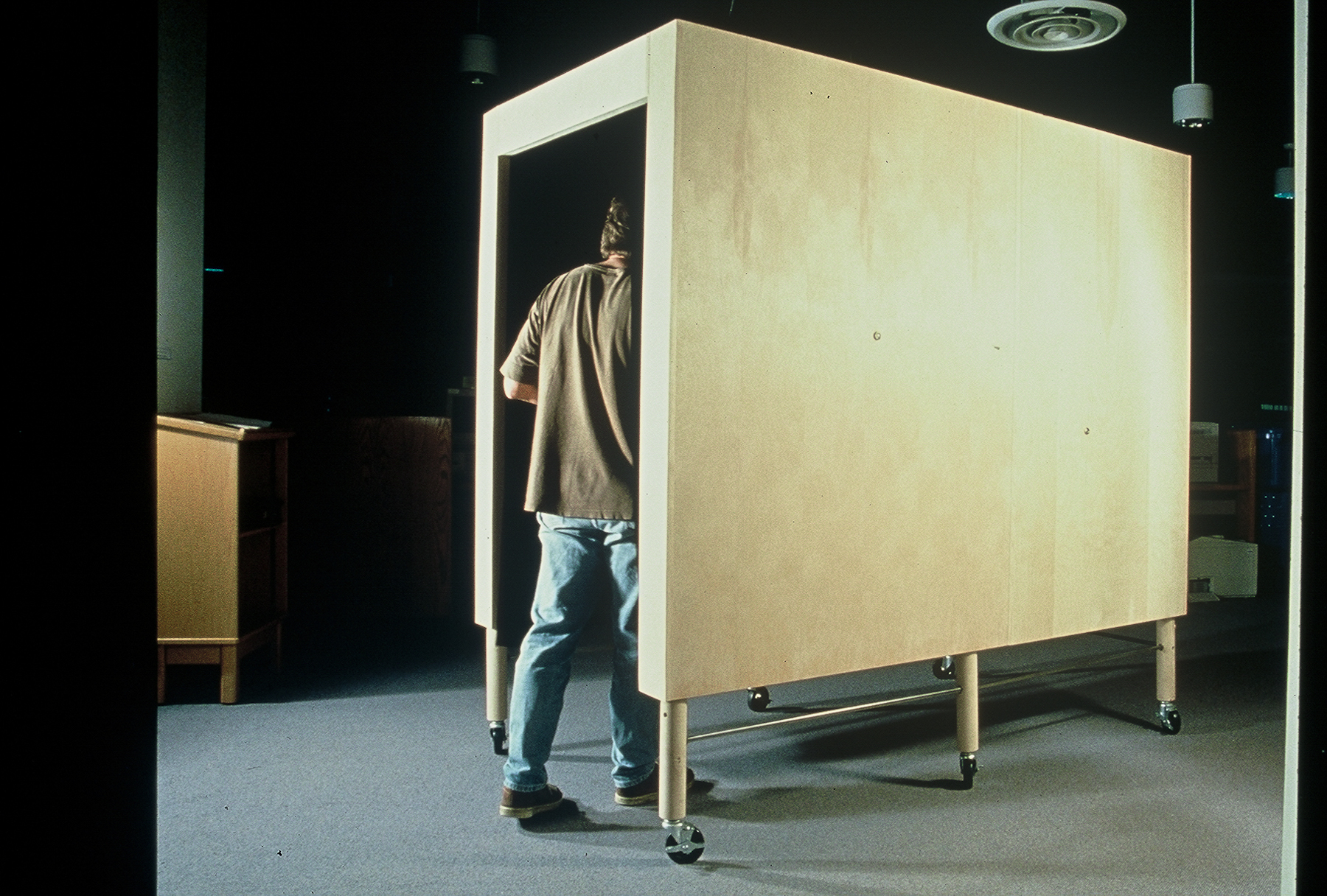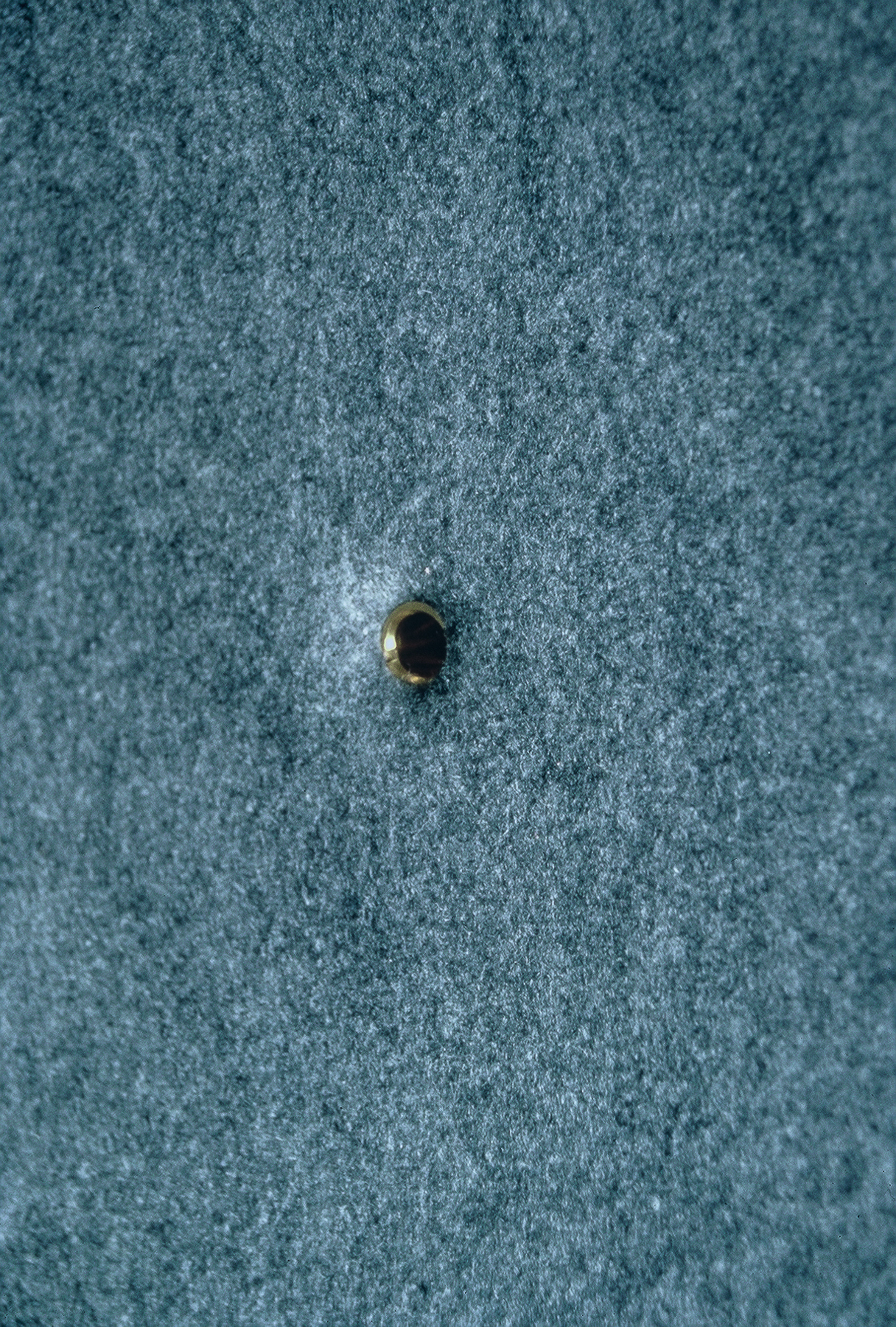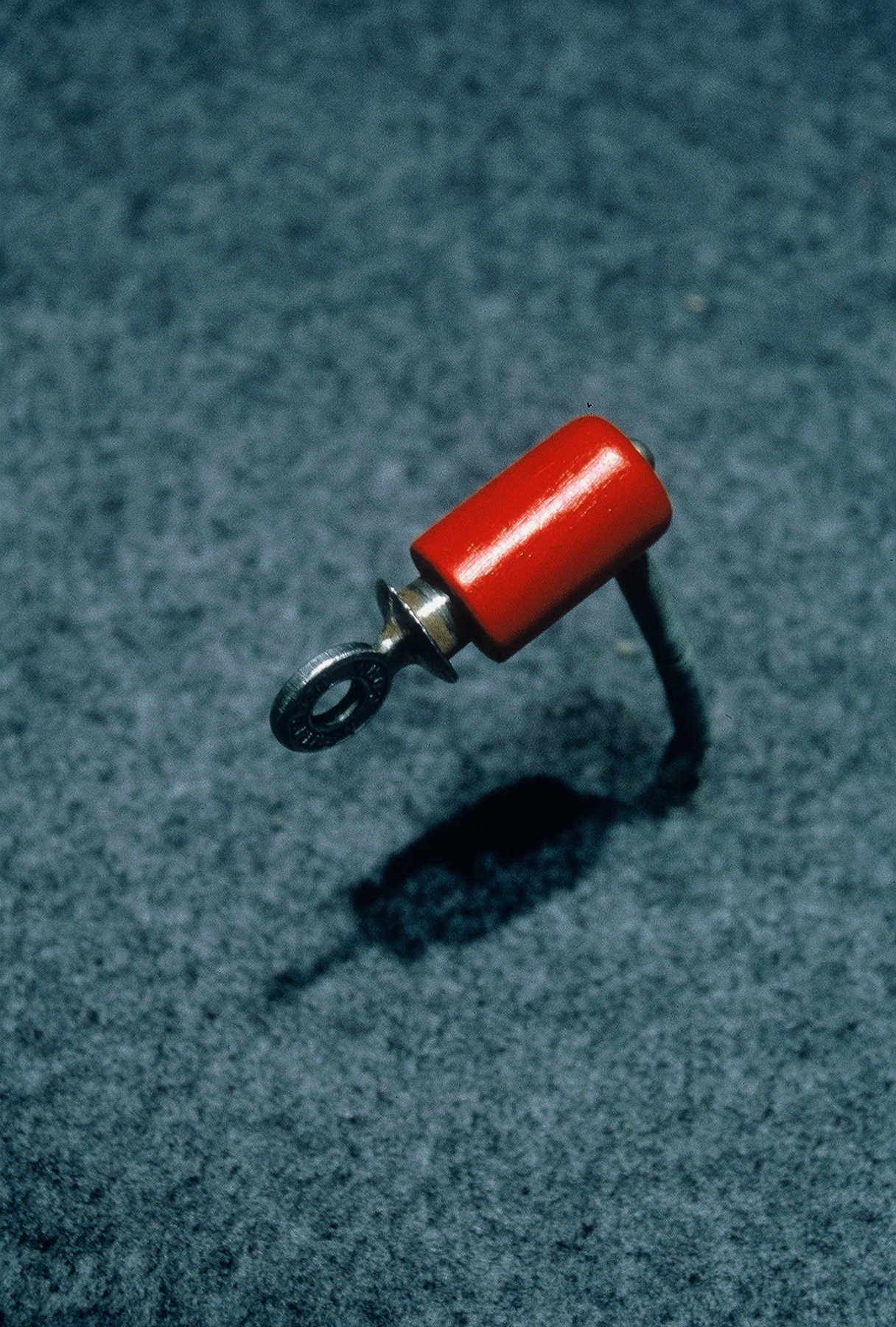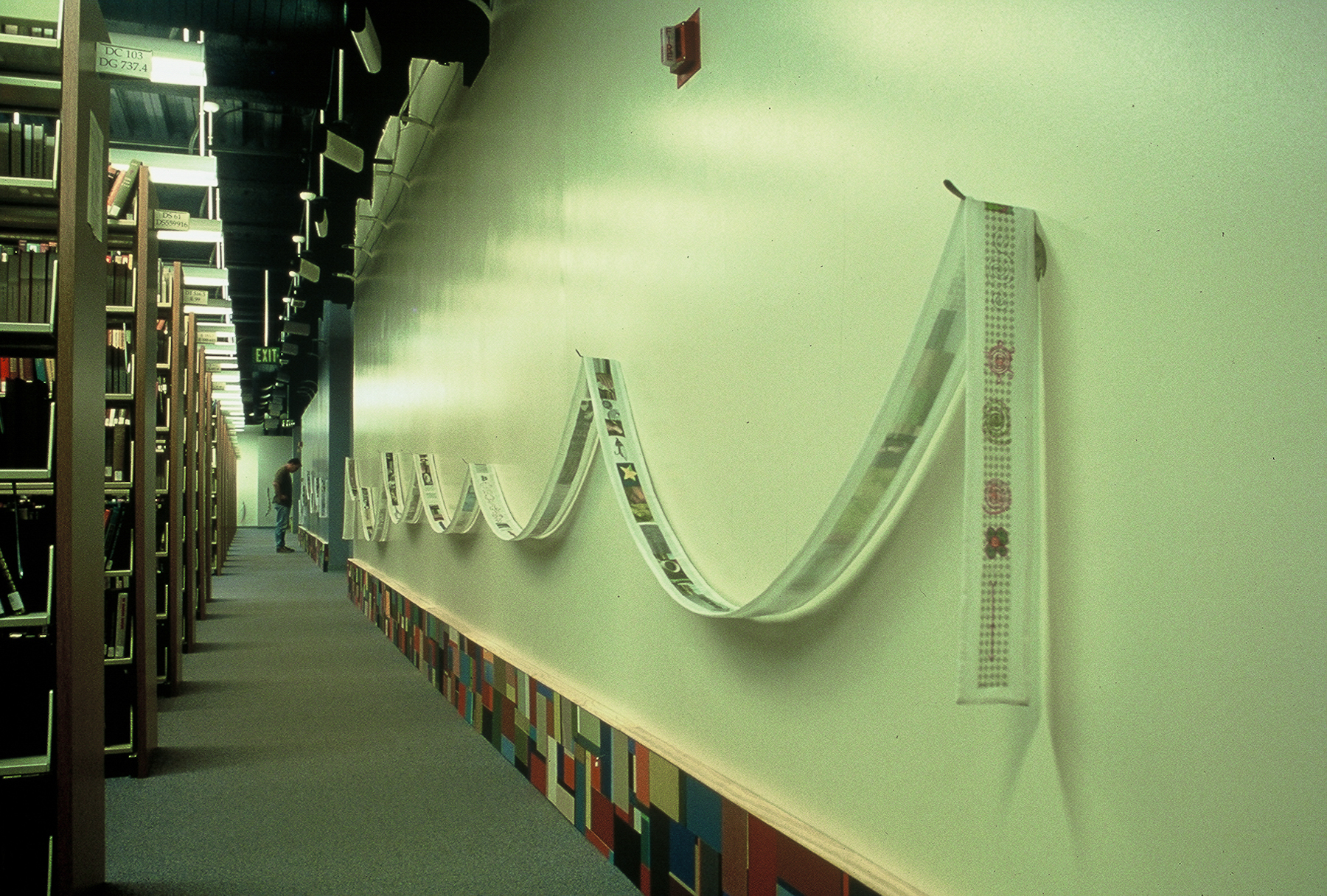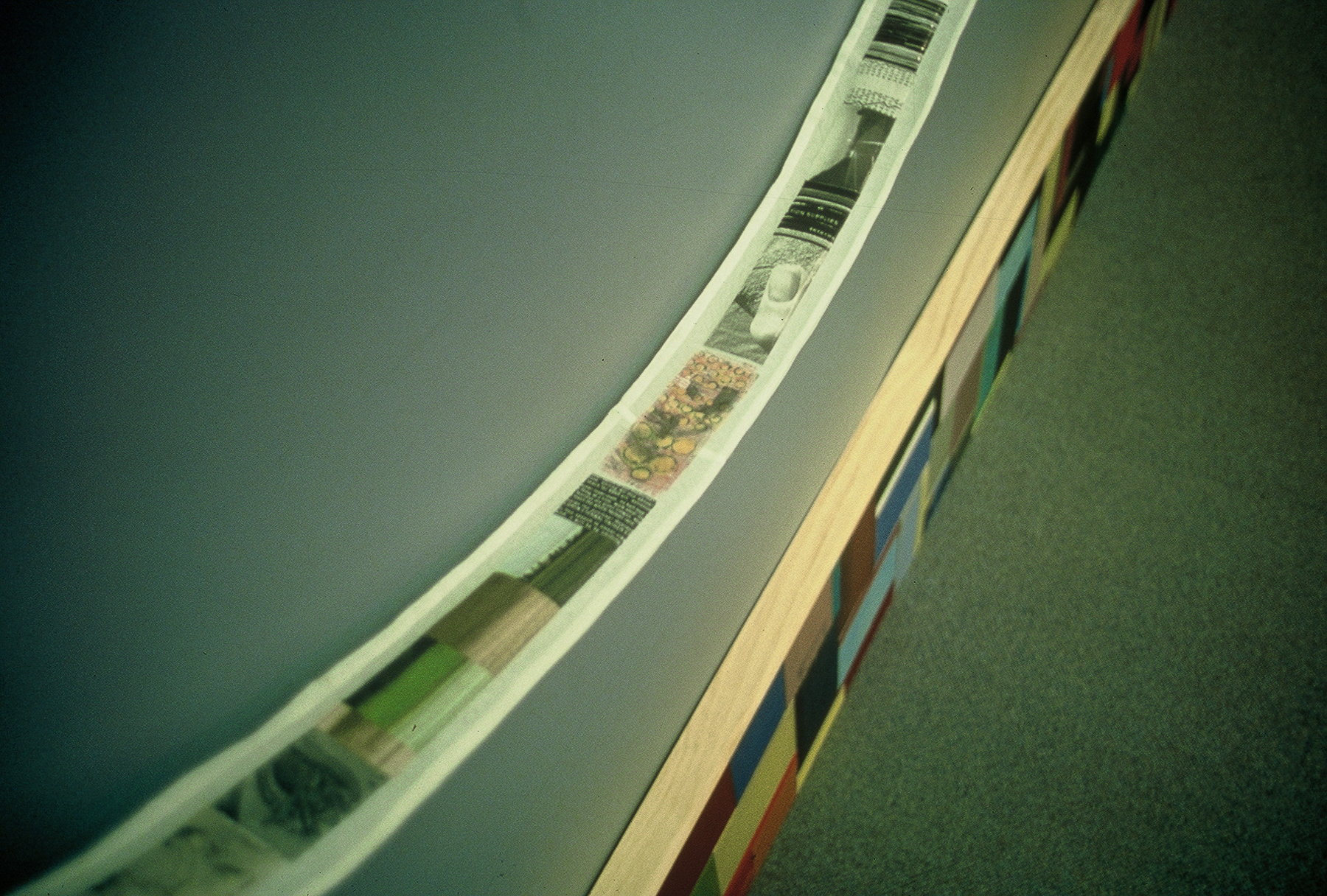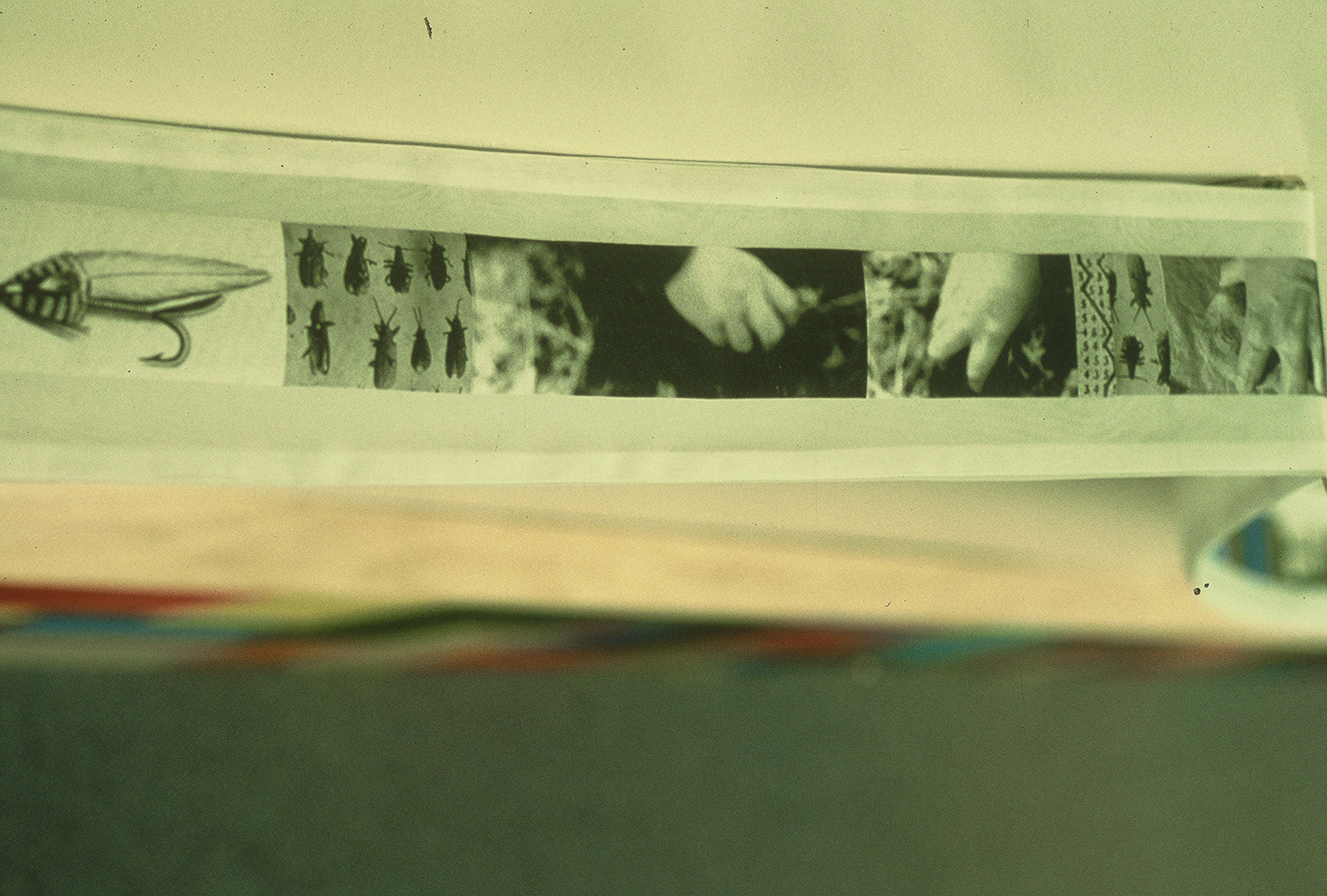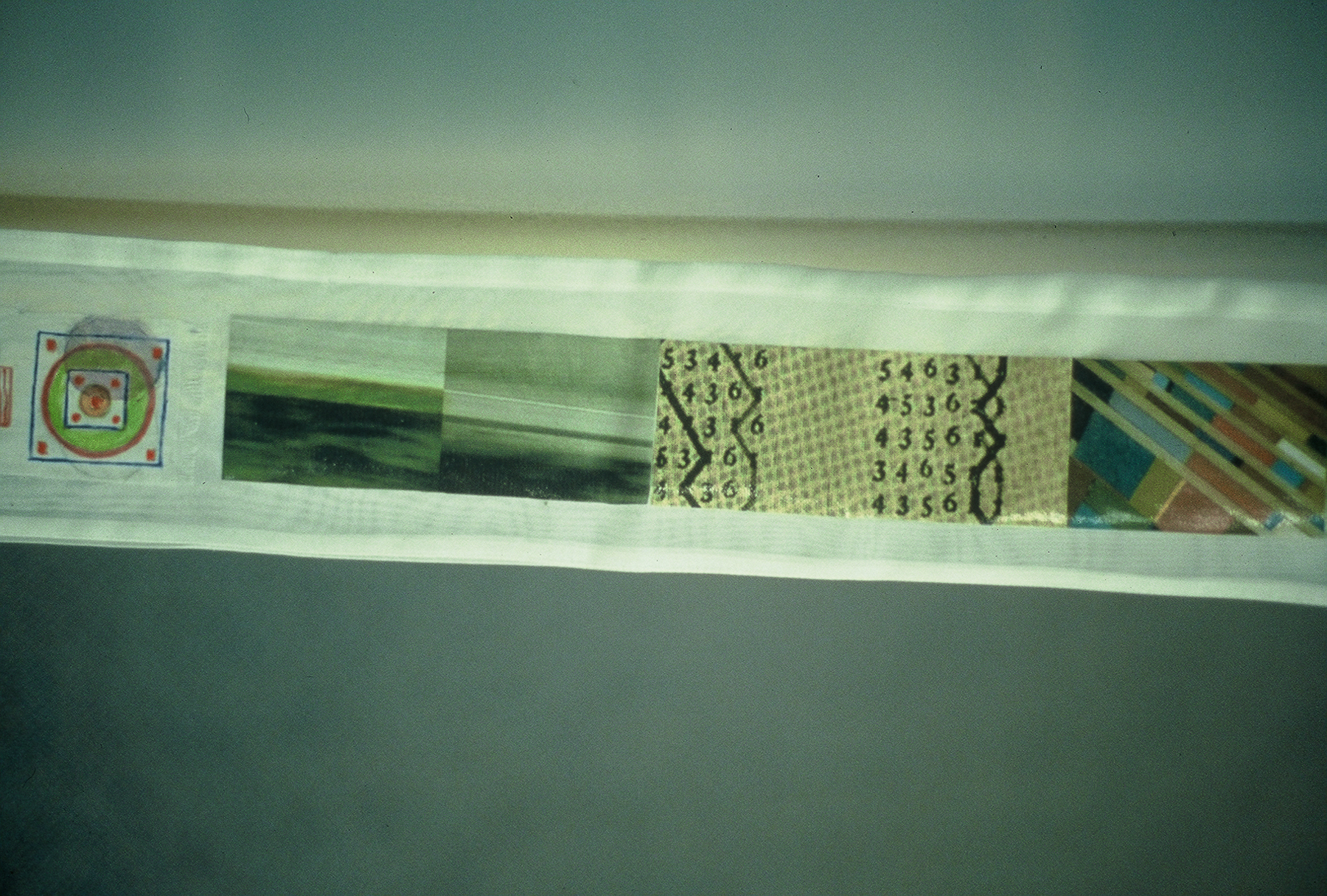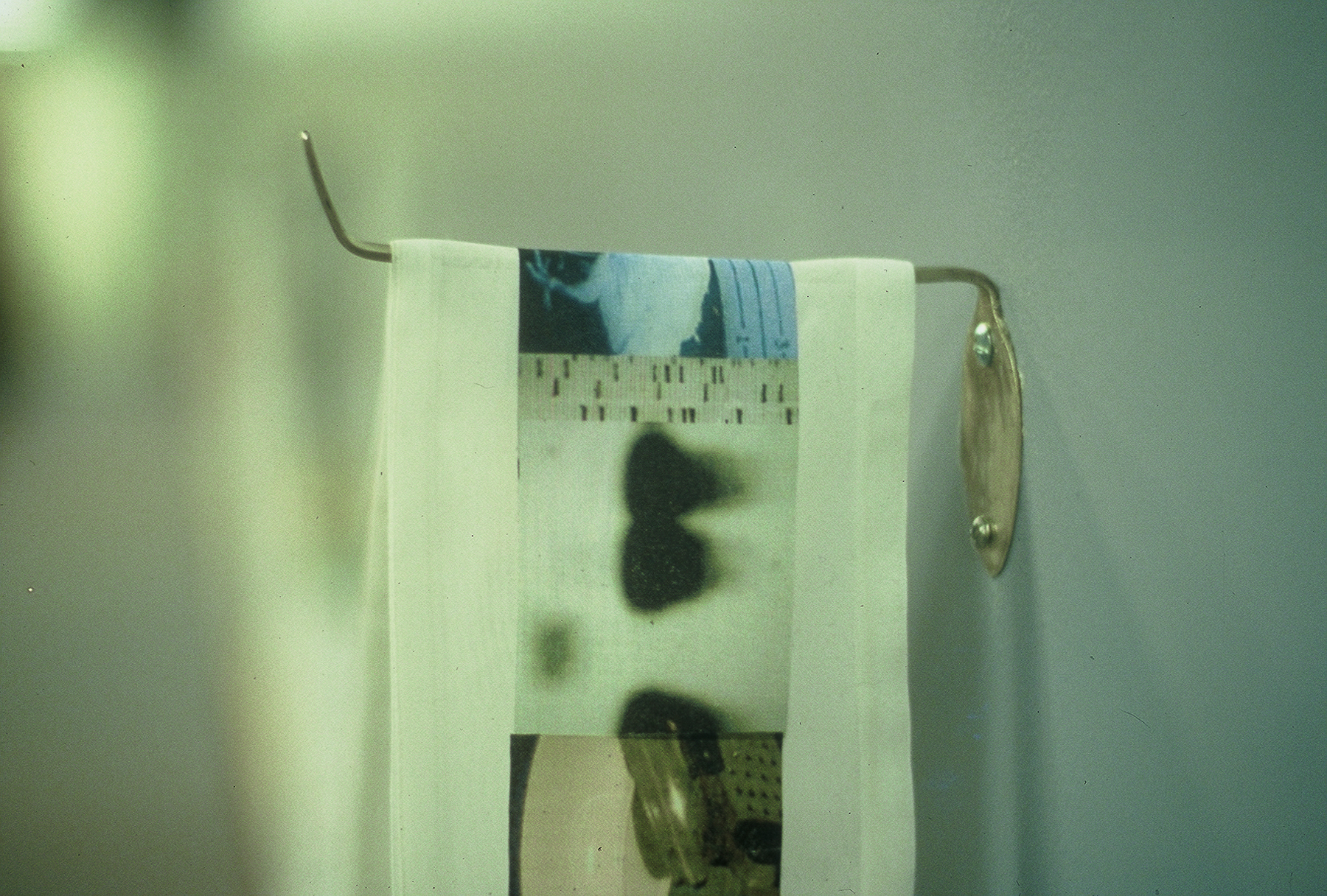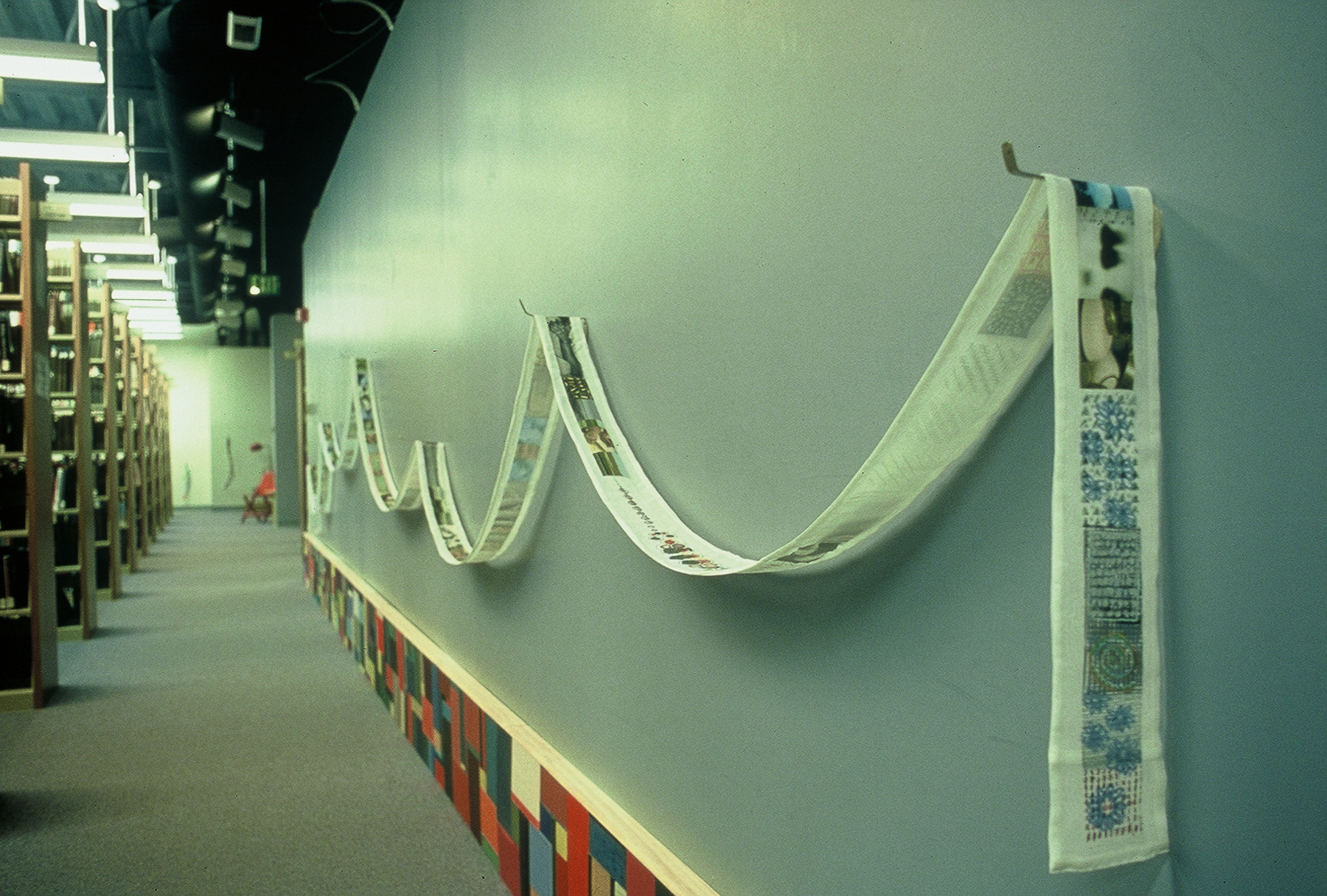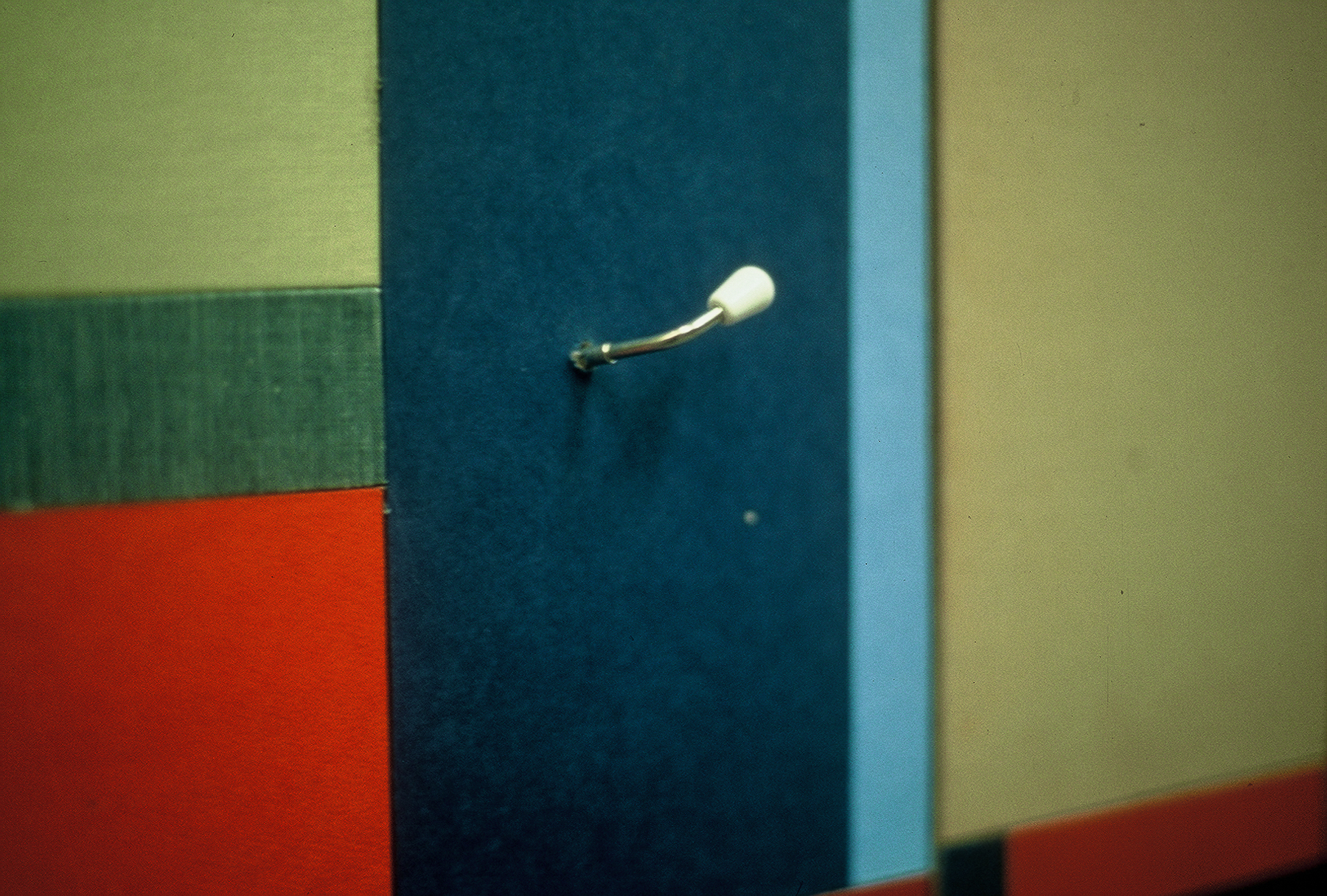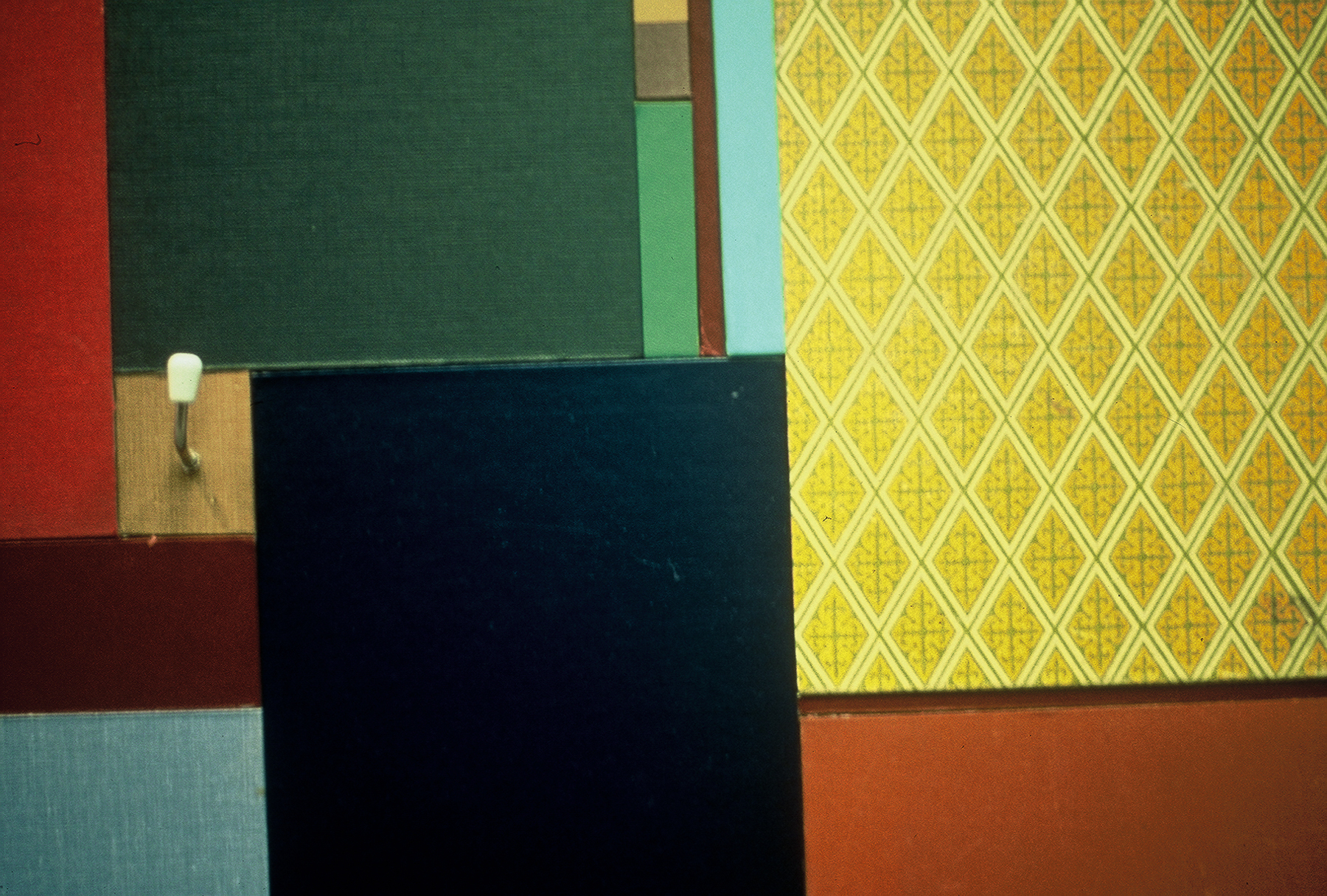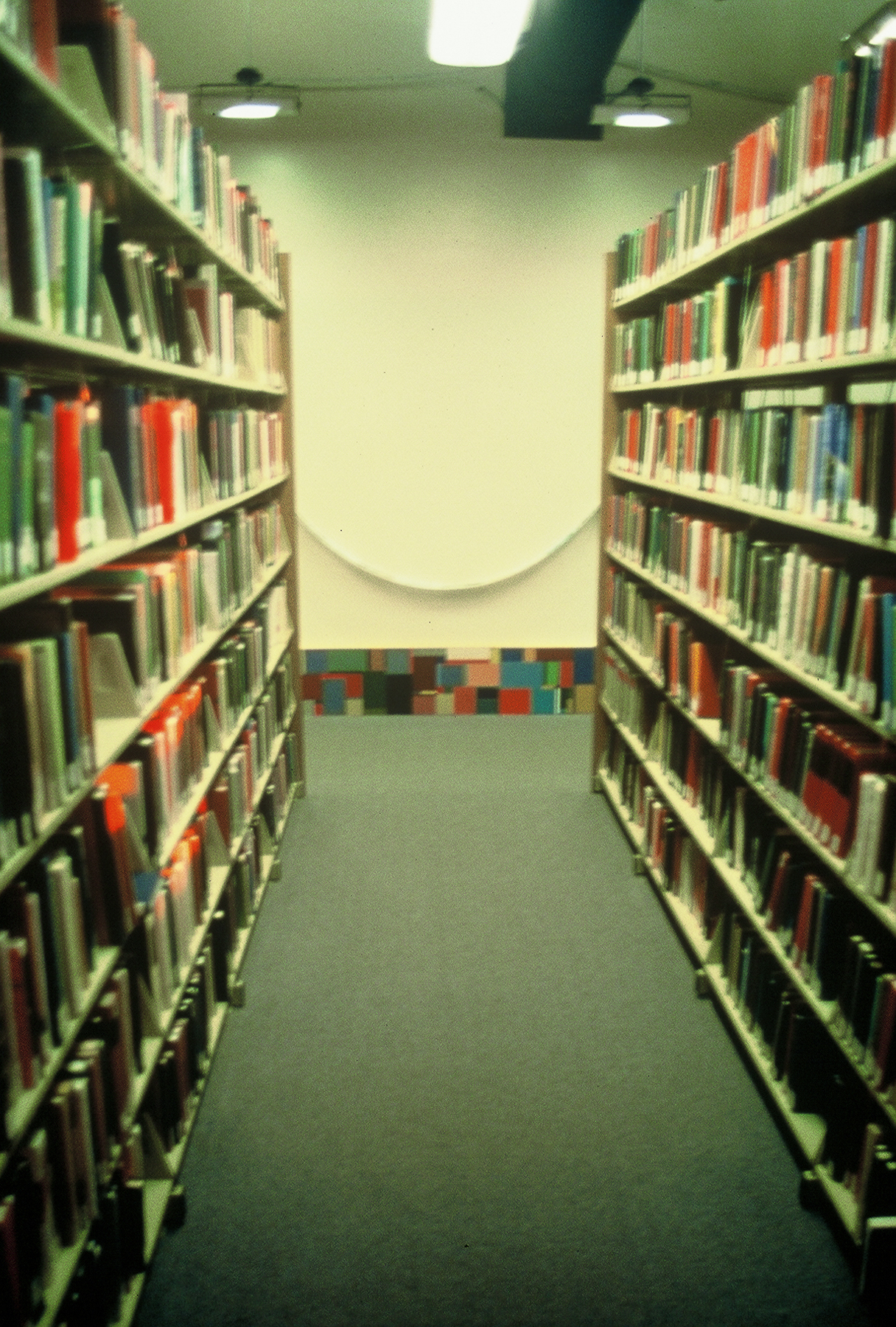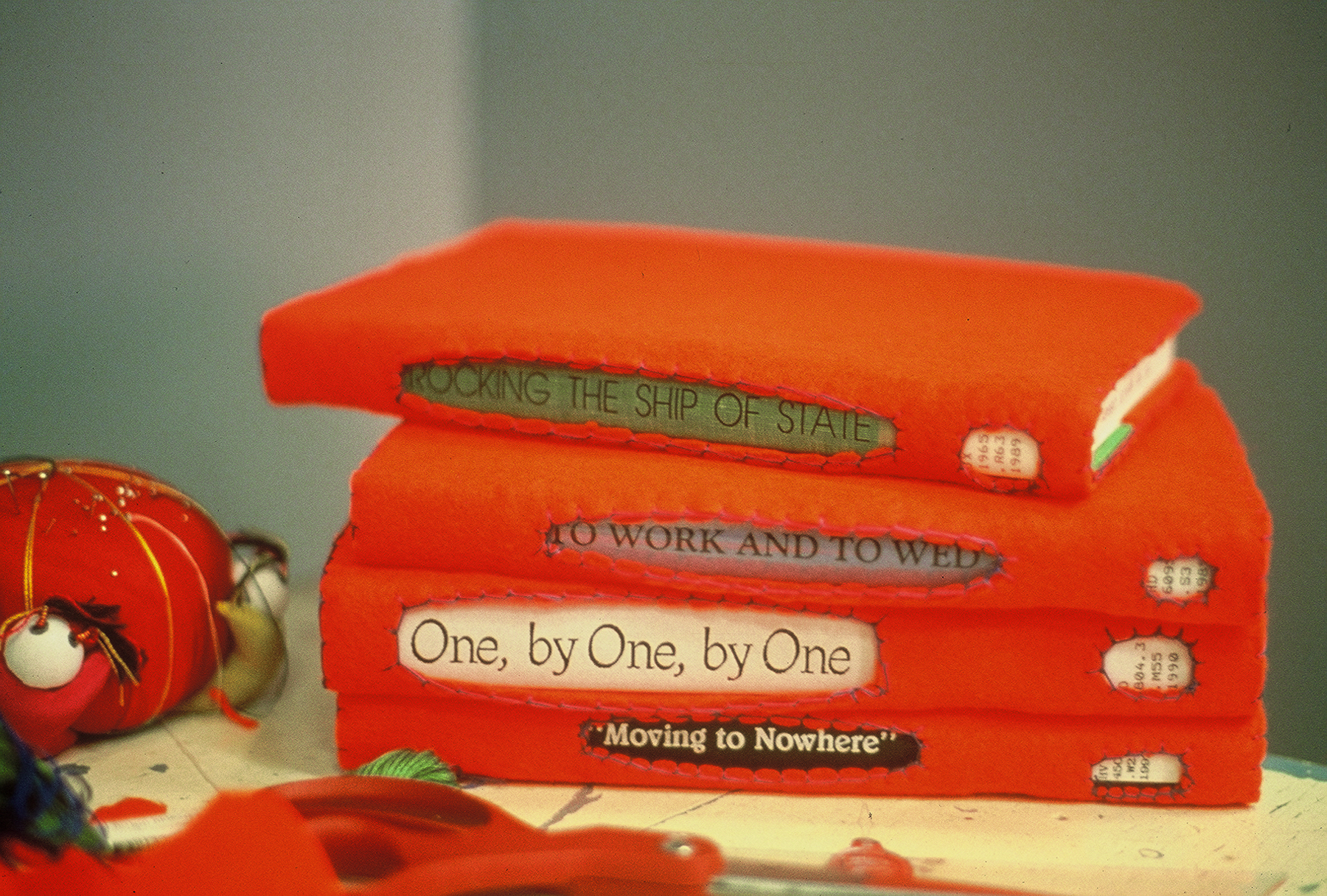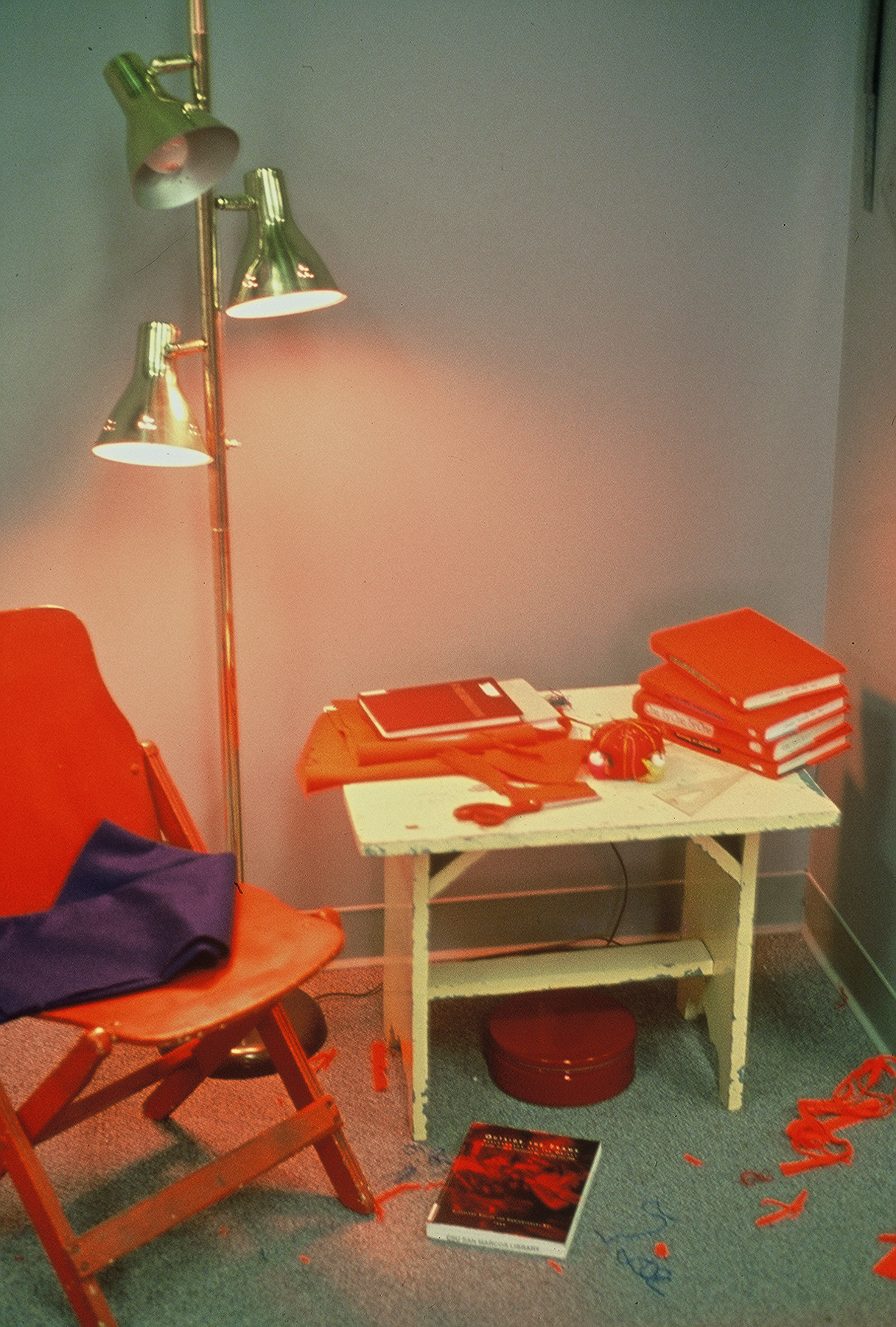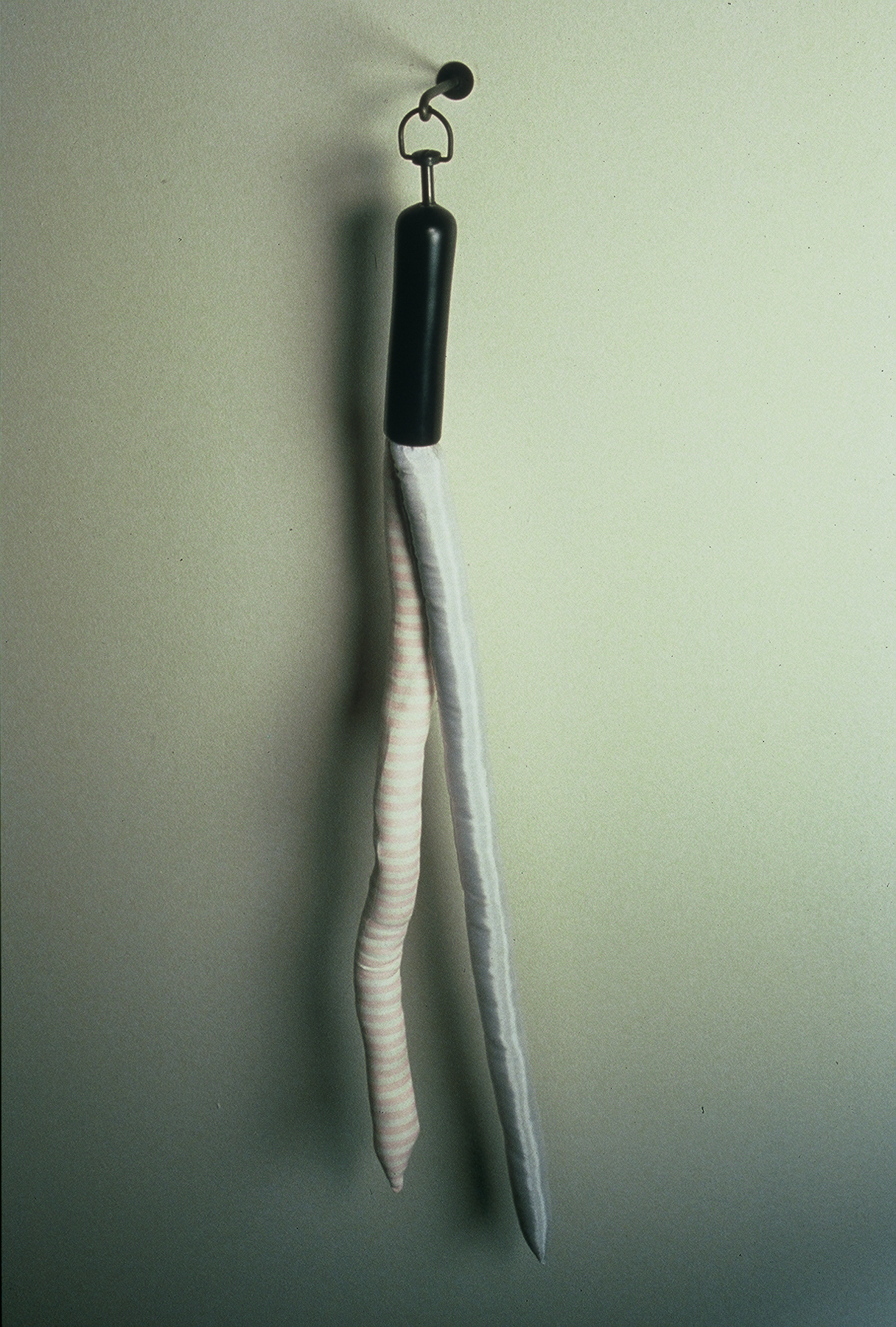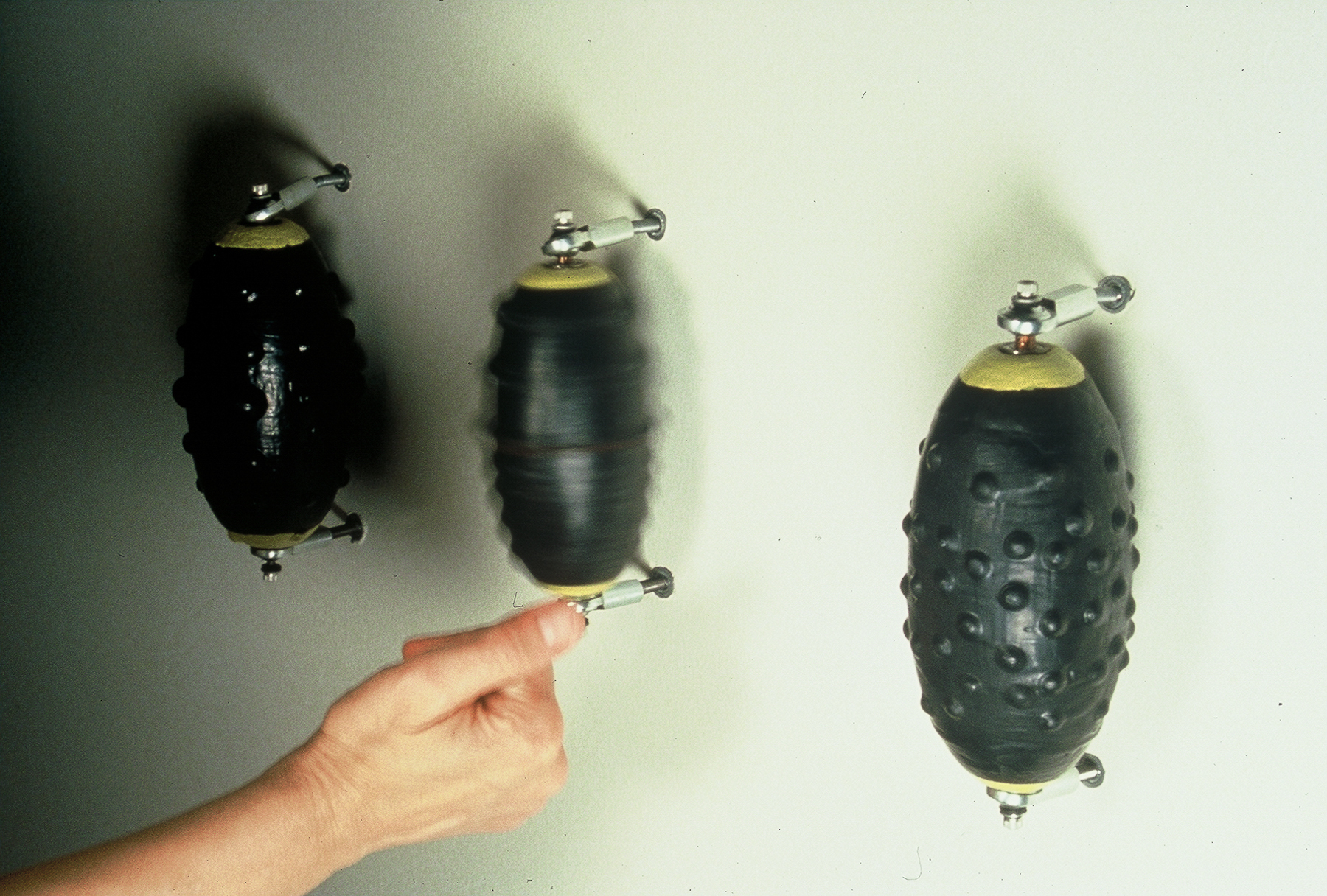Bells and Whistles: Sidetracked in the Library
Richard Keely and Anna O’Cain February, March 1998
Cal State University San Marcos Library
Bells and Whistles, an interactive installation by Richard Keely and Anna O’Cain provides visual, audio, and tactile distractions in the library at California State University San Marcos. The installation calls attention to the potential of sidetracks or accidental discoveries in the pursuit of scholarly research. Elements within Bells and Whistles elicit an awareness of spatial and kinesthetic intelligence: Images and sounds, objects to touch, spaces to enter, holes to look through, and instructions to follow are used to engage the viewer in physical learning experiences. On Mondays the artist(s) will be in the library making felt book jackets for books from the stacks nearest the installation. The books will be re-shelved and remain in the library after the installation is removed.
Upon entering the library there is a large wooden box on wheels with a black velvet curtain at one end of the box. It is 7.5’H by 5’W by 7’D. The box is to be entered through the velvet curtain. Three people can stand in this box at one time to peer out through the eyehole lenses to various parts of the library. The box is lined with gray felt. The ceiling is glass so that the ceiling of the library can be seen. (It is filled with ducts and pipes and braces and wires all painted black.) Because the box is up on wheels the feet of the people inside the box can be seen. On the back wall of the inside of the box there is fixed an Audubon birdcall or whistle. Viewers can make the sounds using the birdcall.
Outside the box and around the corner the installation continues down a ninety-foot corridor with a wall on one side and book shelves on the other. Along the floor of the wall there is a colorful kickboard (fifteen inches high) running the length of the wall. It is patterned with geometric squares and rectangles of color. (The pattern is formed with actual book covers. This is not very obvious; but when walking past the long stacks of books on the left one can see similar colors from the books on the shelves with the patterns of color along the floor.) Four tiny protruding wires come out of the patterned floor panel from which four different audio tracks can just barely be heard:
1) the artists working together in the studio
2) cooking a meal without conversation
3) frogs, crickets, footsteps on wet asphalt, getting into a car and driving away
4) the ocean waves.
Two long strips of images sewn and glued to a four-inch linear sash of voile hang above the colored kickboard. The images, though linear in form, function as a list or a poem of everyday events. The images are digital, hand drawn, and photographic. Many images of hands working and resting are included among other images of road trips, scientific diagrams, meals, lists, recipes, and colorful hand drawn doodles and patterns. The string of images removes the hierarchy of sources and places all information laterally along the same strip. The band of images is draped over flattened and bent eating utensils positioned at different heights along the wall.
Further down the corridor two tables and chairs are arranged along the wall. The tables and chairs are from home, not of the style that institutions would use. This is where the artist(s) make felt book covers for books selected from the stacks. The books are selected by the title only. A little slit is cut for the title and for the call number. After the felt jacket is made, the books are re-shelved and may be checked out. These book jackets will remain on the books long after the installation is gone.
Along the very back wall is an arrangement of unusual looking objects; objects inspired by a child’s busy box. It’s as if there’s a breakdown in this area. These objects are meant to perplex the viewer, they are meant to be touched, to be handled, to spin. It is in this area that one might realize that the purpose of scholarly research or the object of investigation could be completely lost in the face of an accidental discovery. The discovery of something new can overshadow a particular pursuit.

